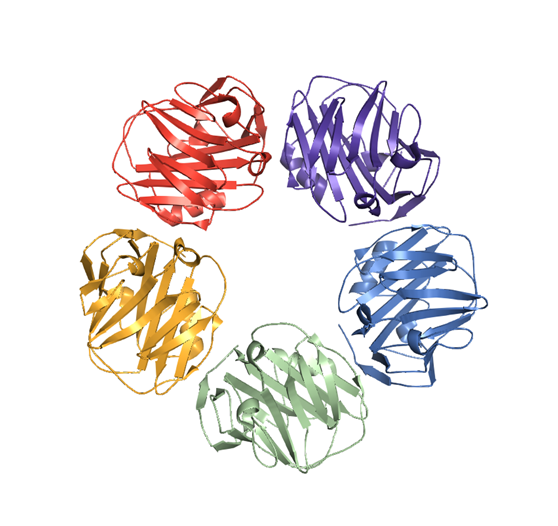What is an Immune engager?
A bridge that literally connects two cells. Typically connecting the cell 1 with an effector function to the cell 2, the target.
For the target binding, engagers must have target specificity. If they want to connect two targets, they need to be bispecific, for three target binding, they must be trispecific.
Surprisingly, multi-specificity is a very old concept, more than 60-years old. In 1961, Alfred nisonoff first suggested the possibility of bispecific targeting with heterodimeric-ally designed antibody. Recall that the first successful recombinant protein (insulin) production was in 1978, and that the hybridoma technology was developed in 1975, the origin of bi-specific antibody dates back a very long time ago.
The first proposed form of bi-specific antibody was a simple (Fab)2, but with the development of DNA cloning technology, much more diverse and stable multi-specific assets began to be designed, such as a dumbbell shaped Morrison format or tandem scFv-formed BiTE module.
With more than half a century of history, total 5 engagers have been approved by FDA/EMA (Catumaxomab is withdrawn in 2017). Interestingly, except for Amgen's blinatumomab, which received FDA approval in 2014, all the rest engager assets approved within this year, reflecting the recent growing interest in the engager pipeline. It is also worth noting that most of the approved engagers are targeting B cell related hematological cancers such as FL (follicular lymphoma) or MM (multiple myeloma).
| Company | Trade Name | Drug Name | Target | Approval | Indication |
| Trion Pharma | Removab | Catumaxomab | CD3/EpCAM/CD20 | EMA (2009) | Malignant ascites |
| Amgen | Blincyto | Blinatumomab | CD3/CD19 | FDA (2014) EMA (2015) |
R/R ALL (B precursor) |
| Immunocore | Kimmtrak | Tebentafusp-tebn | CD3/GP100 | FDA (2022) EMA (2022) |
Uveal melanoma |
| Roche | Lunsumio | Mosunetuzumab | CD3/CD20 | EMA (2022) | R/R FL |
| Janssen | Tecvayli | Teclistamab | CD3/BCMA | FDA (2022) EMA (2022) |
R/R MM |
Most remarkably, all the approved immune engager assets use CD3 as a target protein that can connect and directly activate the signal I complex of T cells. Most of developing pipelines in phase 3 also use CD3 protein as immune cell target as well (Glofitamab, Epcoritamab, Elranatamab, Catumaxomab).
CD3 targeting engagers have two distinct mode of action. 1) immunological synapse formation that physically, chemically connects tumor antigen and CD3 (representative T cell marker, 2) Promotes TCR-CD3 clustering, and in this process, forces to turn on T cell signaling regardless of MHC-peptide.
The second mode of action could be the strong and weak point at the same time. By amplifying the TCR-CD3 complex signal, more dramatic therapeutic effect could be expected, but sometimes, the excessive TCR signaling from the pan-CD3+ cell population acts as a risk factor to cause systemic damage, limiting the therapeutic window.
Immune engager란 무엇일까?
문자 그대로 면역시스템과 관련된 뭔가를 서로 연결해주는 bridge. 통상적으로는 어떤 면역학적인 작용을 할 수 있는 effector cell과 그 작용을 받는 target cell을 연결하는 역할이다.
단백질이 표적에 결합하기 위해서는 특이성을 가져야 한다. 두 개의 표적에 동시에 결합하기위해서는 이중 특이적 (bispecific) 결합이 가능해야 하며, 세 개의 표적에 동시에 결합하기 위해서는 tri specific 분자가 되어야 한다.
이런 multi-specificity의 개념은, 놀랍게도 지금으로부터 60여년 전에 제안되었다. 1961년 발표된 논문에서 Alfred nisnonoff는 heterodimeric antibody design에 대하여 서술하면서 bispecific targeting의 가능성을 처음으로 제시하였다. DNA cloning을 통한 재조합 단백질 생산기술을 처음으로 성공했던 것이 1978년이었고, hybridoma를 이용한 항체생산기술이 발명된 해가 1975년이었음을 감안하면, 정말 긴 역사를 거슬러 올라가는 셈이다.
최초로 제안된 bi-specific antibody의 형태는 두 개의 Fab arm으로 이루어진 간단한 형태였지만, 분자생물학과 molecular cloning 기술이 발전하면서 훨씬 더 다양하고 안정적인 format의 multi-specific asset이 개발되기 시작하였는데, dumbbell shape을 가지고 있는 Morrison format이라던지 tandem scFv 형태의 BiTE molecule이 그 대표적인 예이다.
반세기도 넘게 지난 지금, 철회된 1개의 asset (Catumaxomab, Trion pharma)을 제외하면 총 6개의 약물이 FDA/EMA의 승인을 받았다. 생각보다는 적은 숫자다. 심지어 2014년에 FDA 승인을 받았던 Amgen사의 blinatumomab을 제외하면 나머지 asset들은 모두 최근 1년 사이에 승인을 받은 약물로, 최근 높아지고 있는 engager pipeline에 대한 관심도를 잘 보여준다. Metastatic uveal melanoma에 대하여 승인을 받은 tebenatafusp-tebn (immunocore)를 제외하면 모두 FL, MM등의 B 세포 기반 혈액암을 표적하고 있다는 점도 함께 눈여겨볼 만하다.
무엇보다도 주목할 만한 부분은 승인된 engager asset 모두 T 세포의 signal I complex를 직접적으로 연결, 활성화시킬 수 있는 CD3를 표적단백질로 사용한다는 점인데, 3상이 진행되고 있는 대부분의 drug들 역시 CD3 단백질을 면역세포 표적단백질로 사용한다 (Glofitamab, Epcoritamab, Elranatamab, Catumaxomab).
CD3 표적 engager들이 기대하는 mode of action은 두 가지가 있다. 하나는 T cell의 대표적인 marker CD3와 tumor antigen을 물리적으로 연결해줌으로써 immunological synapse를 만들어주는 부분이고, 다른 하나는 CD3에 결합하여 CD3 clustering을 유도하고 이 과정에서 T세포의 신호를 강제로 MHC-peptide와 상관없이 강제로 turn-on 시켜주는 것이다.
두번째 mode of action은 CD3 engager의 강점이자 약점이 되는데 TCR-CD3 complex 신호를 증폭시킴으로 더 dramatic한 치료효과를 기대할 수 있는 반면, 너무나 광범위한 CD3+ 세포들을 활성화시킬 수 있다는 점이 이로 인한 cytokine storm 등의 systemic damage를 일으킬 수 있는 위험요인으로 작용하여 therapeutic window를 제한시킨다.

* 그림 출처 : https://www.blincytohcp.com/rr/mechanism-of-action
'Immunology' 카테고리의 다른 글
| Market approach for cancer immunotherapy (0) | 2022.11.10 |
|---|---|
| Introduction to cancer immunotherapy (0) | 2022.11.10 |
